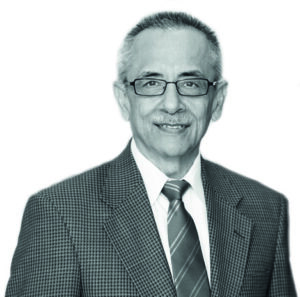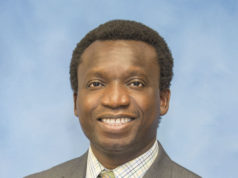
Workplace culture is fascinating to observe because it is nebulous and hard to measure. There is also often a perceived gap between the existing and the intended culture in terms of how the organization deals with human errors or unintended mistakes. In Mayo Clinical Proceedings, Shanafelt and colleagues point to the incongruence between artifactual and espoused values in medicine. In other words, how we embrace the fact that to err is human in the professional culture domain.1 But our contradictory behavior reflects the profession’s aspiration to perfectionism and low self-compassion. This behavior is then transmitted to our students and trainees.
I started thinking about this in the context of the existing culture in many if not most academic healthcare educational programs. One salient feature in these training programs is that besides being learners ourselves, there is a requirement that we commit to teaching learners (students and trainees). Most of us commit to it in academic surgery to varying degrees. I knew very early on in residency and private practice that I loved to teach and learn as well. I learned from many academic and private practice surgeons in my own training. The commonality was that there was a “learning” culture.
Is academic culture synonymous with learning culture? It depends on how one defines “academic,” and what the existing culture is like. Academic is defined as “relating to education and scholarship,” so clearly either full-time academic faculty or voluntary faculty enthusiastic about teaching and learning are both included. What, then, is learning culture? Adam Grant, who carried out work for relates his work for Melinda French Gates, says psychologic safety is its foundation, allowing people the freedom to admit their lack of knowledge, have the humility to re-learn, take risks, and make mistakes. It then comes down to whether there is an existing culture of learning, which, broadly speaking, includes teaching, education, and scholarship. Therefore, it is the learning part that is the essential ingredient, which is critical in any academic environment whether at a university or a private teaching hospital.
Grant relates his work for Gates, co-director of the Gates Foundation, as a perfect example of a learning culture when she agreed to provide psychologic safety to employees at the foundation by allowing everyone to see her reactions to her own negative reviews, which were shared by live video conferencing.2 He points out that allowing vulnerability by leaders is important and shows that they are also seeking to learn and improve themselves. In a non-clinical sense, learning culture is quite different from the performance culture that my generation experienced, where any decision was purely about results, with little room to fail. Arthur Kaplan, PhD, founder of the division of medical ethics at NYU Grossman School of Medicine, goes even further and has argued that even in the clinical area, other than “culpable” mistakes such as drugs or alcohol, etc., we need to learn from them. “We tend to pay attention to errors and want to know how to punish them,” he said. “The correct moral position, I think, is [to] prevent error.”3
In a recent Search and Physician Wellness Services Organizational Culture Survey, a supportive management— non-clinical in this case—approach to mistakes was seen as one of three ranked as most important to physician satisfaction. Others have also advocated to minimize the culture of fear and blame in the clinical context.
In 2013, the National Academy of Medicine proposed a framework for healthcare systems called the Learning Health System (LHS) to transform care delivery.4 The LHS was intended to facilitate “continuous knowledge development, improvement, and application,” while also recognizing the importance of vision, leadership, investment, and culture change.”5
This requires a top-down push by senior leadership, but, more importantly, all stakeholders must be brought into the learning framework and supported by their immediate leader. While I am not aware of conclusive results associated with this approach, the impact on morale, work satisfaction and employee retention make sense. My point is that there is an authenticity gap related to learning in academic surgery. Consistency of people at the top and those under them has been described as “cultural coherence.” Leaders stand to benefit from cultural cohesion with high levels of connectivity with colleagues, employees and indeed the entire organization.6 Our leaders may think they are in alignment with the values and culture of learning in their faculty, trainees and employees—but many are not. Leaders should strive for this coherence and function as teachers and mentors, provide resources including continuing education time, and be seen as learners themselves. In return, they should require and expect up-to-date knowledge.
To be clear, my observations relate to taking risks and making mistakes in the management and patient care context— they are not about jeopardizing patient safety. If non-culpable errors are made, a leader should counsel and protect trainees and employees, and use incidents as an opportunity to gain experience rather than to punish. This applies particularly to medical students and residents. They need to be taught self-compassion and be protected, but not coddled by us to lessen the learning anxiety at most training programs. This involves a conscious culture change in order to lower physician burnout and attrition rates. Leaders want to hold people accountable for their decisions and actions.
The message may translate into “no mistakes are tolerated,” which makes people pull back and make few decisions at all. To become healthy, the academic culture must be a learning one. A single leader with vision can have an enormous impact on establishing a healthy culture—or changing an ill one.7 And what allows us to feel safe so we can all thrive? Self-aware leaders.
References
- Shanafelt TD et al. Healing the Professional Culture of Medicine. Mayo Clin Proc. August 2019;94(8):1556-1566 https://doi.org/10.1016/j.mayocp.2019.03.026.
- https://www.strategy-business.com/article/Building-a-culture-of-learning-at-work.
- Bean M, Carbajal E. ‘We can’t punish our way to safer medical practices’: 2 experts on criminalization of medical errors. https://www.beckershospitalreview.com/patient-safety-outcomes/we-can-t-punish-our-way-to-safer-medical-practices-2-experts-on-criminalization-of-medical-errors.
- Smith M, Saunders R, Stuckhardt L, McGinnis JM, eds. Best Care at Lower Cost: The Path to Continuously Learning Health Care in America. National Academies Press (US); 2013. http://www.ncbi.nlm.nih.gov/books/NBK207225/.
- Realizing a learning health system through process, rigor, and culture change. Healthcare Volume 8, Supplement 1, June 2021. https://doi.org/10.1016/j.hjdsi.2020.100478.
- Global Culture 2021. PWC Report.
- Runge MS. Medicine needs a culture change to retain talented physicians https://www.statnews.com/2019/01/28/medicine-culture-change-retain-talented-physicians/.
Bhagwan Satiani, MD, is a Vascular Specialist associate medical editor.












